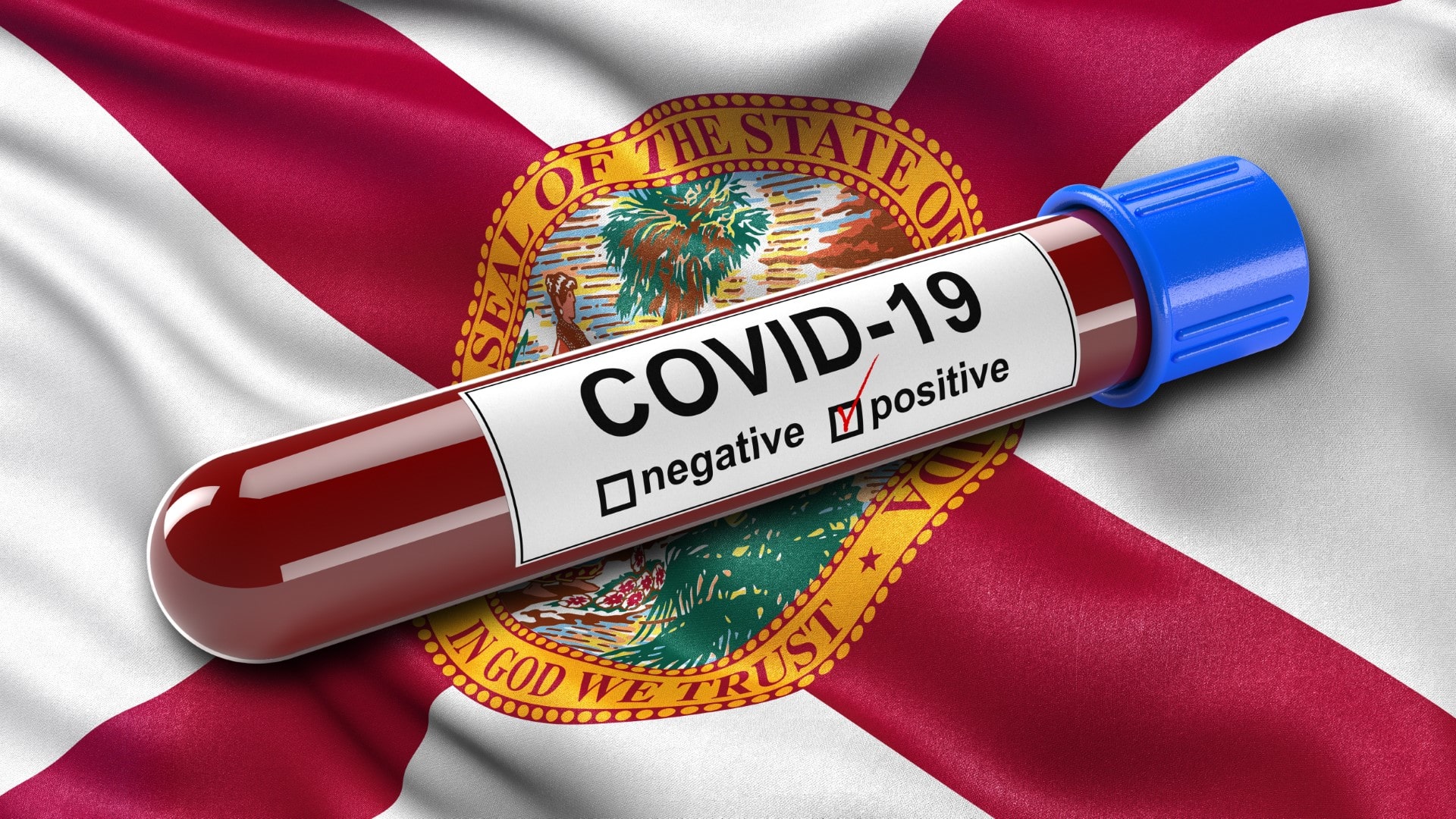- coronavirus
- coronavirus deaths
- coronavirus hospitalizations
- coronavirus pandemic
- coronavirus reopening
- coronavirus testing
- COVID-19
- COVID-19 deaths
- COVID-19 hospitalizations
- COVID-19 reopening
- COVID-19 testing
- COVID-19 virus
- Department of Health
- DOH
- FDOH
- Featured Post
- Florida Department of Health
- new coronavirus
- novel coronavirus

For the first time since mid-June, state health officials recorded a positivity rate below 5% for COVID-19 tests.
That comes the day after the Department of Health (DOH) showed a 10th consecutive day with single-digit positivity rates.
With Friday’s 4.9% positivity rate, the seven-day average percent positivity rate fell from 7.4% to 7%. Ten percent is the state’s self-imposed target threshold, but some medical experts have pointed to 5% as when services like schools could start reopening.
DOH diagnosed 4,311 new cases in Florida, raising the overall case count to 597,597. Of those, 591,283 are Florida residents while 6,314 are non-residents.
The new cases cover residents and non-residents confirmed positive Friday morning to Saturday morning. For all-day Friday, the state diagnosed 4,311 positive residents, coincidentally the same count. Those residents had a median age of 43.
On Thursday, DOH reported that it had confirmed the 10,000th death of a Florida resident. As of Saturday, 10,274 Floridians have died after the department confirmed 108 more and removed two.
Of those newly-confirmed deaths, two occurred outside the last 30 days and beyond the scope of the report’s timeline. Of those visible new fatalities, 19 occurred on Thursday and one occurred Saturday morning.
On top of the 10,168 resident deaths, 137 non-residents have died in the state after officials confirmed one more fatality.
But deaths are also a lagging indicator of the pandemic. Deaths can occur weeks after someone tests positive, and people testing positive were likely infected a week or more prior.
After pointing to positivity rates as one sign that the pandemic was improving in May, Gov. Ron DeSantis began highlighting emergency department visits as his preferred metric.
The week of July 5 saw 6,255 emergency department visits with flu-like illnesses and 15,999 for illnesses like COVID-19. For the week of Aug. 9, those visits dropped to 2,187 and 4,835 respectively.
An additional 332 residents were confirmed hospitalized, down from recent highs above 500 people. And the statewide hospital census has been declining.
Overall, 36,329 people have been hospitalized. But the Agency for Health Care Administration reports 4771 people are currently hospitalized with the disease, down 171 from 24 hours earlier.
Together with the depressed positivity rate, officials received 98,633 test results, the most in two weeks. Through Thursday morning, 4.4 million Floridians have been tested, as have 19,000 non-residents in the state.
More school districts will reopen classrooms this week as favorable outbreak trends continue for the state.
DeSantis has emphasized that teachers who feel unsafe in classrooms could teach remotely, suggesting they could teach remote-learning students. But on Friday, Education Commissioner Richard Corcoran suggested teachers could lose their jobs for not coming into work.
“Any teacher that doesn’t show up to work … whatever that minimal less than 1% of teachers that don’t show up, then they get terminated,” he said on Fox News.
However, before the end of business Friday, Corcoran contacted Florida Politics to clarify that he does not have the power to fire teachers; if they are to be fired or “terminated,” that would be a decision made by individual school superintendents.
_____
Editor’s note on methodology: The Florida Department of Health releases new data every morning around 10:45 a.m. The total number reported in those daily reports include the previous day’s totals as well as the most up-to-date data as of about 9:30 a.m.
Florida Politics uses the report-over-report increase to document the number of new cases each day because it represents the most up-to-date data available. Some of the more specific data, including positivity rates and demographics, consider a different data set that includes only cases reported the previous day.
This is important to note because the DOH report lists different daily totals than our methodology to show day-over-day trends. Their numbers do not include non-residents who tested positive in the state and they only include single-day data, therefore some data in the DOH report may appear lower than what we report.
Our methodology was established based on careful consideration among our editorial staff to capture both the most recent and accurate trends.




One comment
S.B. Anthony
August 22, 2020 at 12:25 pm
Why would anyone believe state health officials when this administration has done nothing but lie, hide, and obfuscate the truth about Covid-19?
Comments are closed.